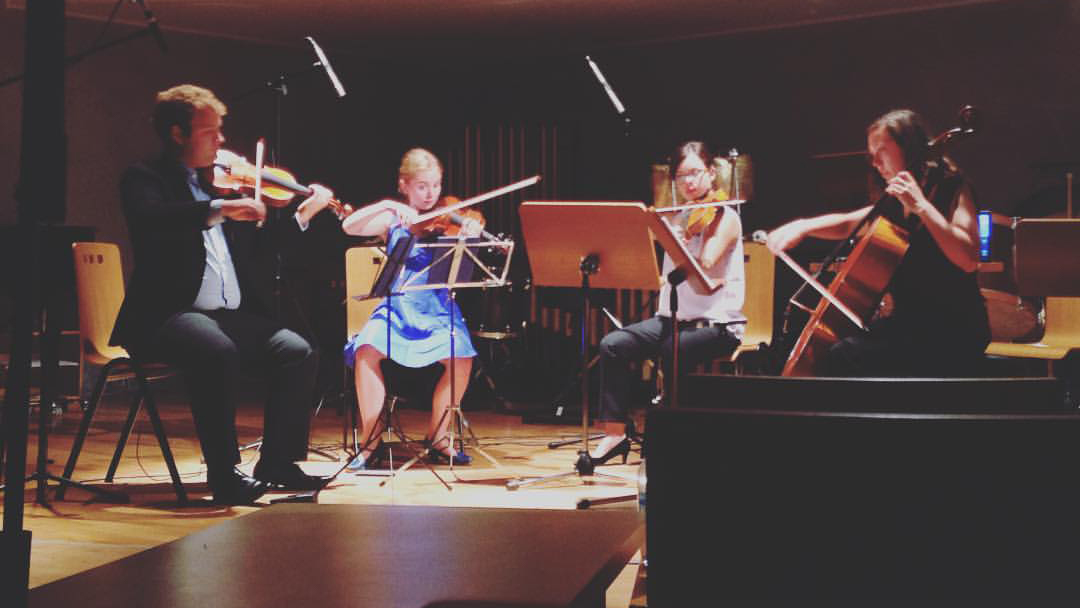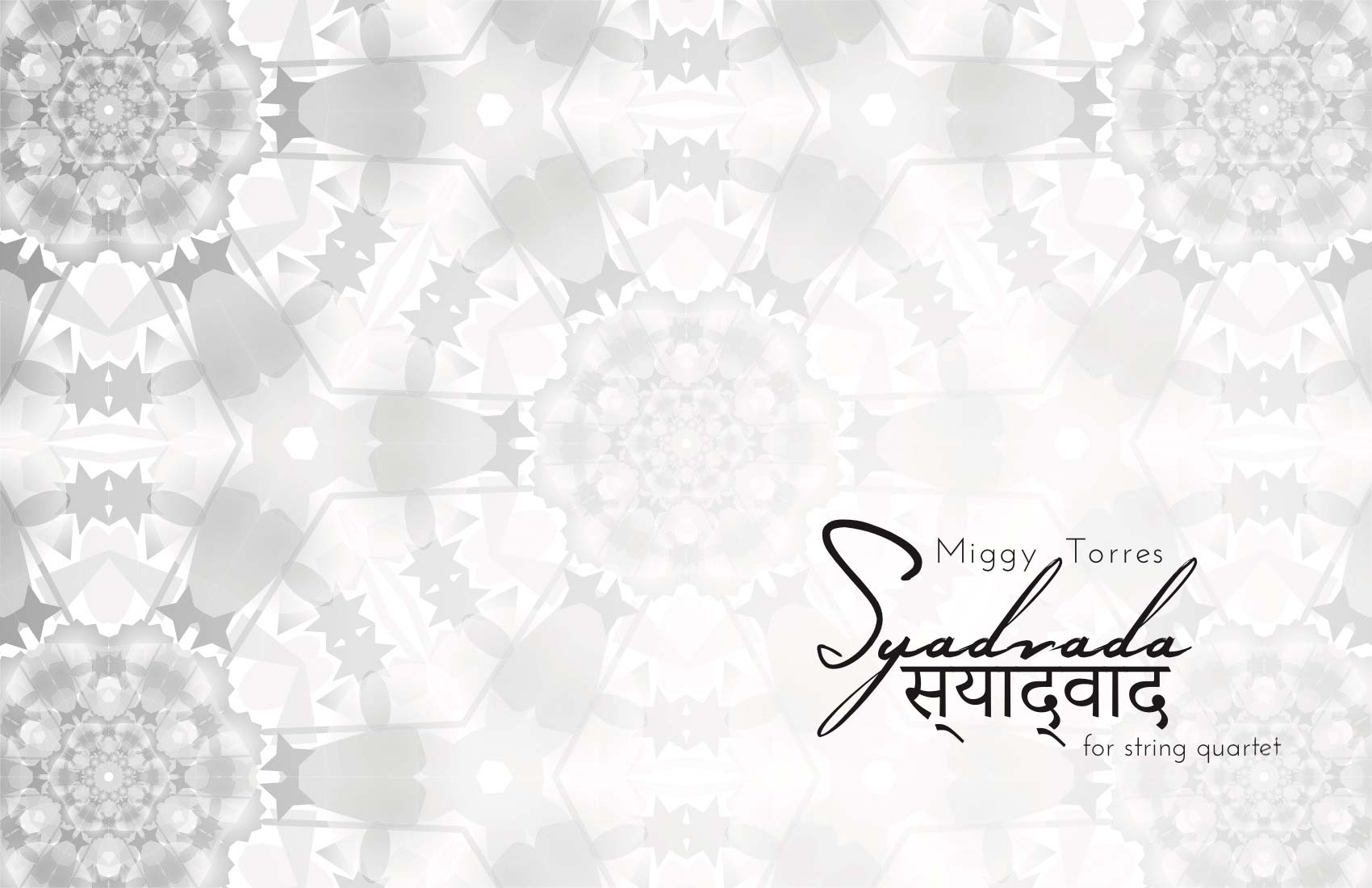

Composer's Note
Syādvāda is a kaleidoscopic journey through the multiplicity of perception.
The concept of Syādvāda—or qualified assertion—is a branch of a part of Jain philosophy called Anekāntavāda or non-absolutism. Anekāntavāda teaches that, though a single point of view can reveal some truth, one can only have a proper perception of reality if one considers it from many points of view. Moreover, one can never hope to have a total and absolute understanding of something, as objects bear an infinite multiplicity of qualities, which then in turn behave with infinite modes of existence.
Anekāntavāda is often illustrated though the parable of The Blind Men and the Elephant.
Three blind men touch an elephant to learn what kind of creature it is. One touches its leg and says, “Ah! An elephant is like a tree!” Another touches its tusk and says, “Ah! An elephant is like a spear!” The last touches its trunk and says, “Ah! An elephant is like a rope!” All of them understood partial truths about the elephant, but none of them had the complete picture. Only with their descriptions combined could a more accurate depiction of the elephant be painted.
In the same way, we as humans have evolved to possess an extremely narrow and specific set of senses, helpful to the survival of our genes in a very specific place in the universe. In other words, we see the world in ways that were useful to us in the past, and—despite building other tools that aid our perception: telescopes, seismometers, microphones, etc.— we cannot hope to create a complete description of reality (at the time of writing this, for example, physicists have yet to reconcile gravity as described by general relativity with quantum mechanics, though both points of view give very accurate descriptions of how the world otherwise behaves).
Syādvāda, a offshoot of Anekāntavāda, aims to help people cultivate ultimate empathy with the world around them by qualifying every assertion with the Sanskrit word “syāt” which translates roughly as the phrase “in some ways.” This gives rise to a sevenfold method of evaluating something in regard to its qualities of being—and modes of existence therein. These seven propositions, or saptibhngī, are:
In some ways it is.
In some ways it is not.
In some ways it is and it is not.
In some ways it is and it is indescribable.
In some ways it is not and it is indescribable.
In some ways it is, it is not, and it is indescribable.
In some ways it is indescribable.
It is important to state that “indescribability” in this case refers to a contradictory simultaneous affirmation and negation of an idea (i.e., in some ways it at once is and it is not), as opposed to the third of the saptibhngī which affirms and negates a quality consecutively. In some ways, the fourth, fifth, and sixth saptibhngī can be viewed as nested forms of the others, with the indescribable component referring to the affirmation or negation itself of whatever one is evaluating; things get complex very quickly.
This piece, Syādvāda, seeks to explore this complexity through cyclical yet non-repetitive metamorphic textures and modular fractal forms. The piece draws upon a wide range of “vantage points” such as the Autonomous Sensory Meridian Response (ASMR) phenomenon, the Spectral movement, and the techniques of composers as diverse as Franco Donatoni and Charlie Parker, among others. In addition, different parts of this piece were composed in different parts of the world: Valencia, Spain; Ithaca, NY; Williamstown, MA; West Hartford, CT; and my home in South Windsor.
Cheers.





